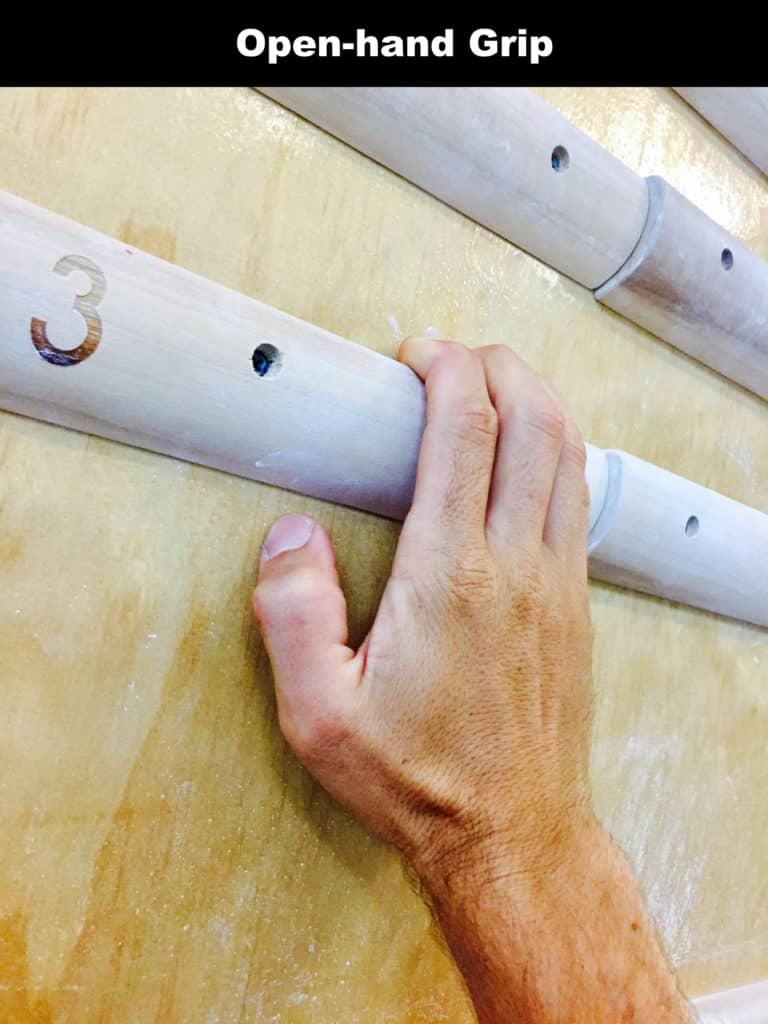Pulley Injuries Explained – Part 1
This is part 1 of 2 in an article series on pulley injuries. Click this link to read part 2 of 2.
If you’re a climber, chances are you have either had a finger injury, or at least you know someone who has had one. According to the research literature, namely Doctors Volker Schöffl1, Alex Folkl, and Erik Gerdes, finger injuries are the number one culprit, with A2 pulley injuries being the most common.2–4 In this two-part article, I’d like to shed some light on:
- What is a finger pulley?
- What forces are placed on pulleys while climbing?
- How are pulley injuries classified and treated?
- What are strategies for preventing pulley injuries?
Due to the overarching prevalence of A2 pulley injuries, this two part series will focus on these injuries.
Anatomy Review:
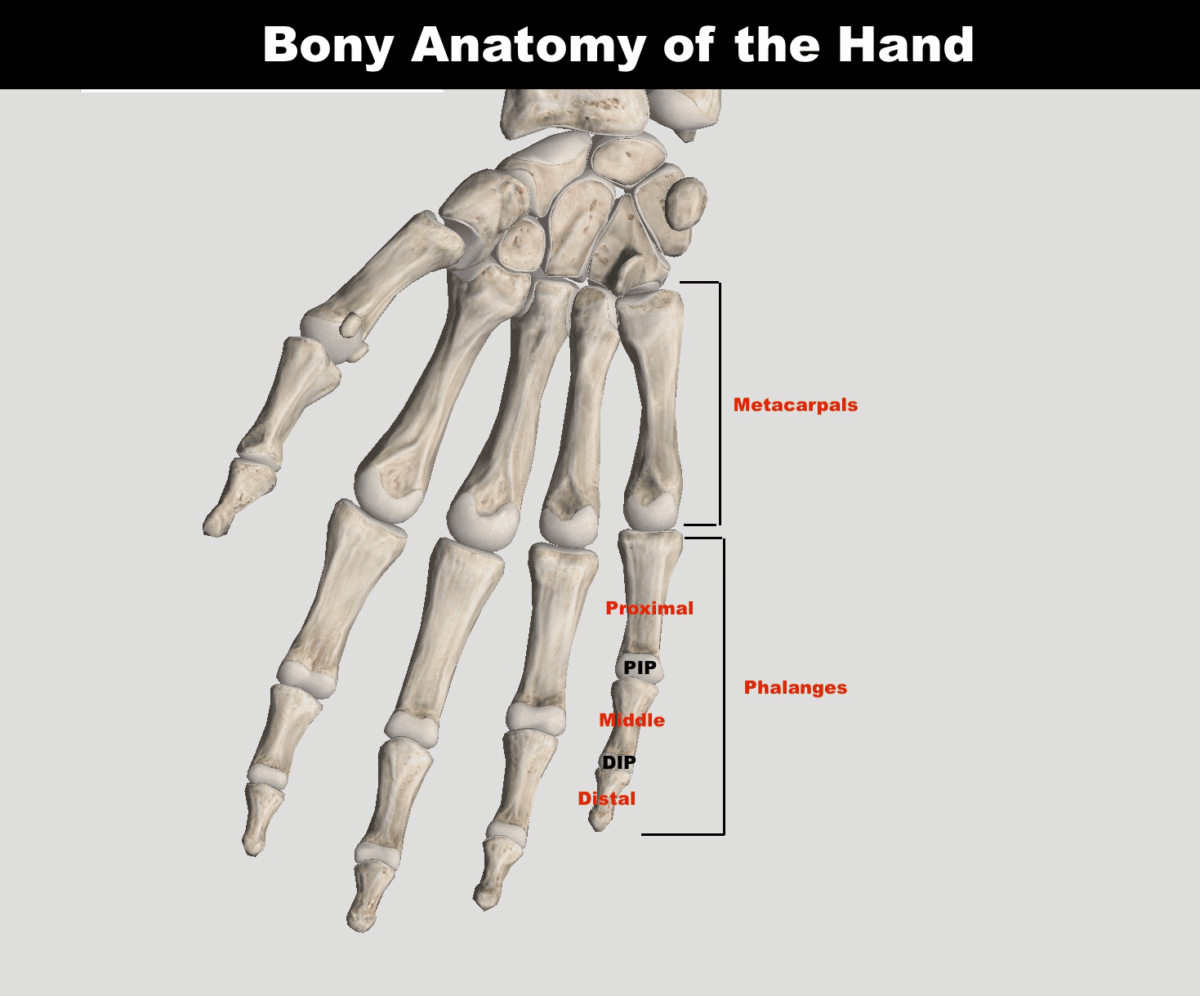
Your fingers are comprised of 3 bones called phalanges: a proximal, middle and distal phalanx (the thumb only has 2: proximal and distal). The proximal is the closer one, and the distal is the farthest one. The proximal phalanges articulate with the metacarpals of the hand at the metacarpophalangeal (MCP) joints. In between each of the phalanges exists an interphalangeal joint, one proximal and one distal. These 2 joints are termed the proximal interphalangeal (PIP) joint and the distal interphalangeal (DIP) joint.
What is a Pulley?
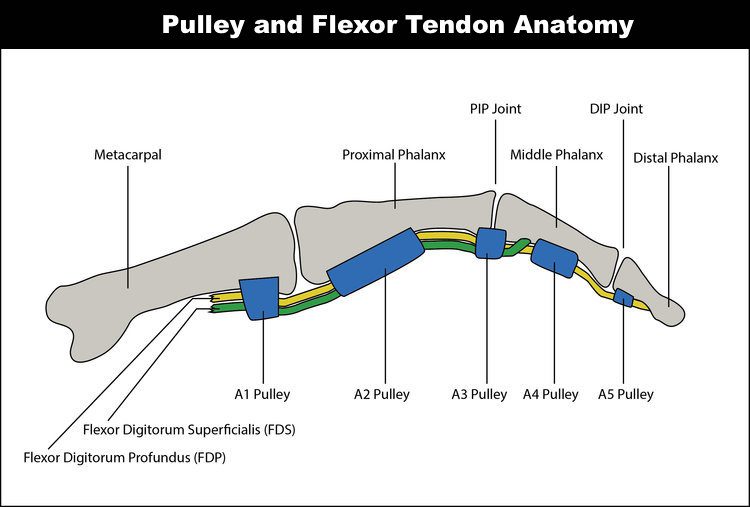
Illustration Credit: Will Anglin
The muscles responsible for flexing our fingers originate in our forearm, but their tendons course through our wrist, hand, and fingers. These two muscles are the Flexor Digitorum Superficialis (FDS) and the Flexor Digitorum Profundus (FDP). The FDS stops and inserts onto the middle phalanx, flexing only the MCP and PIP, but the FDP courses all the way through to the fingertip, flexing the MCP, PIP and DIP. In order to create an optimal line of pull for finger flexion, the tendons need to stay close to the bone.
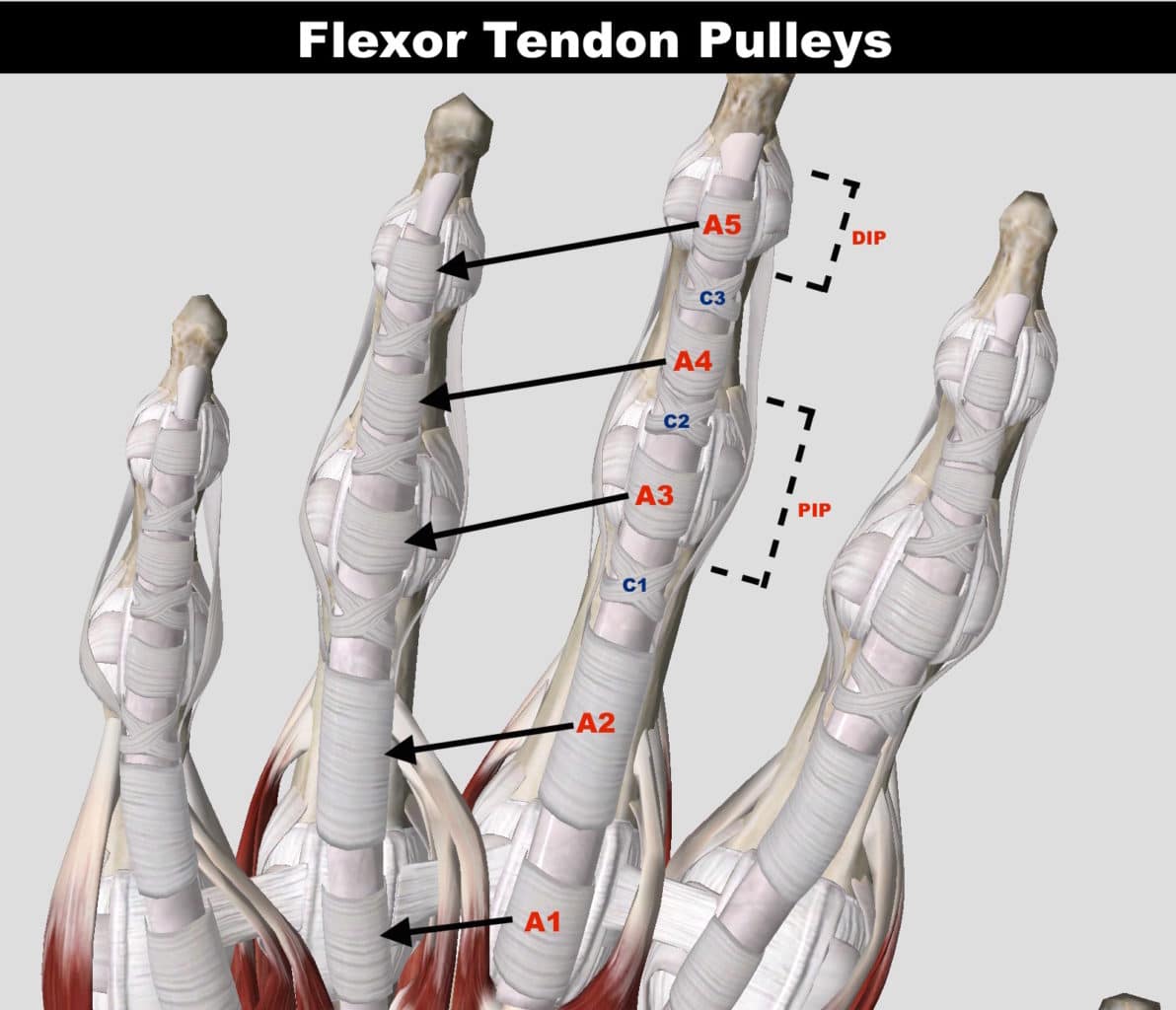
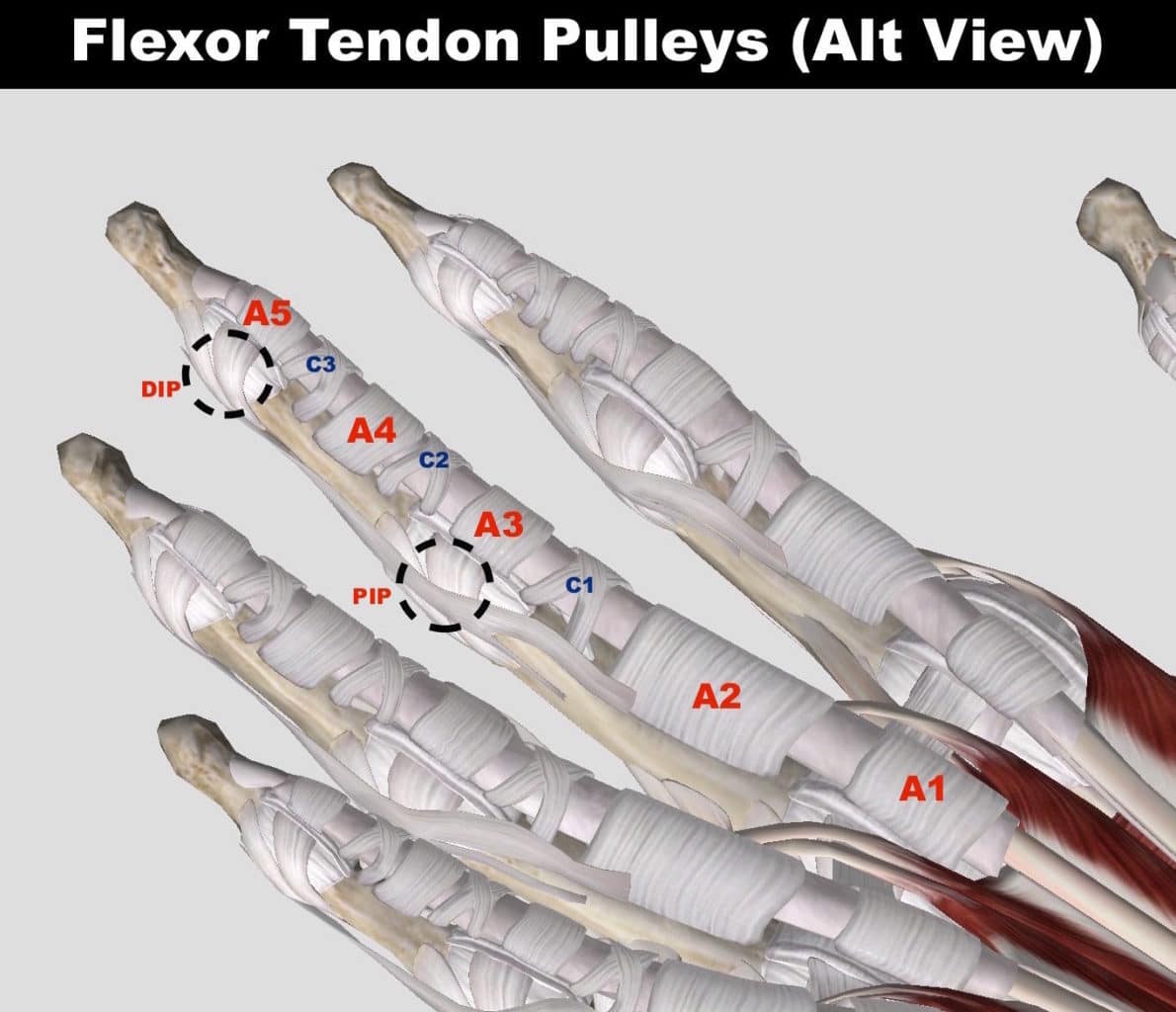
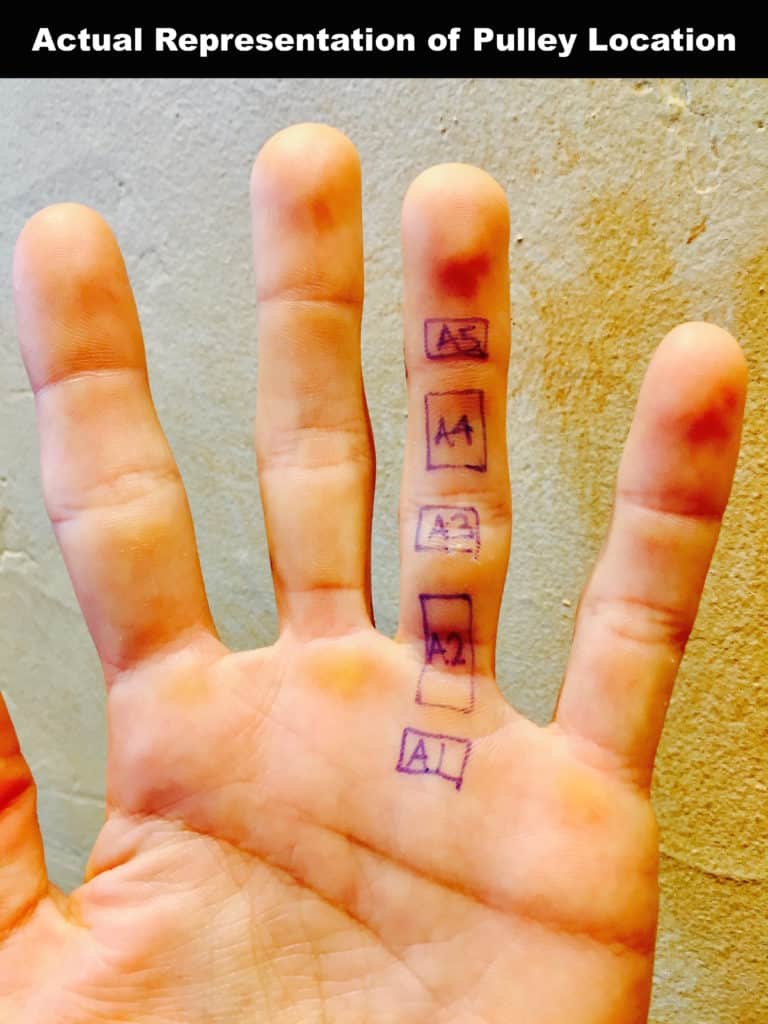
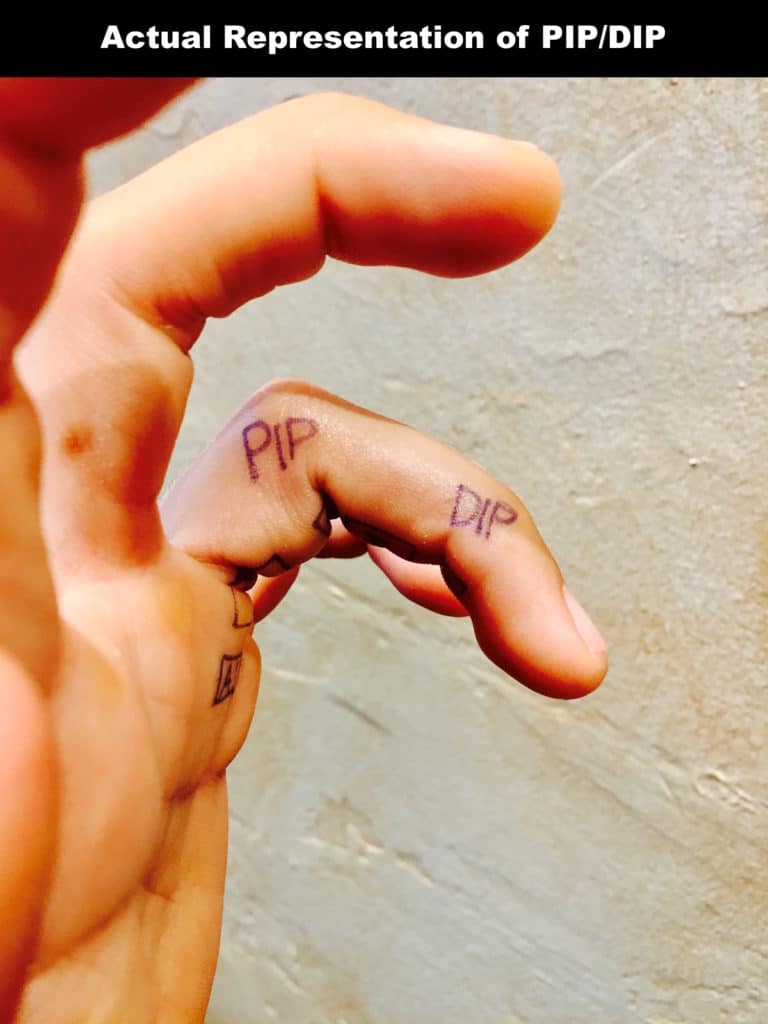
Flexor tendon pulleys (we will focus on the Annular pulleys), named A1 through A5, act as a ligamentous strap to keep the tendon in close contact with the phalanges. The best analogy for this is a fishing rod. The eyelets of a fishing rod, like the pulleys of your finger, keep the fishing line close to the rod when it bends. This optimizes the finger flexor tendons’ line of pull, allowing you to grasp and climb. The pulleys create efficient mechanics for your fingers by maximizing the amount of finger flexion gained per muscle contraction length. Without pulleys, the tendon would pull away from the joint’s axis of rotation during flexion and decrease the functionality of the system.5 In addition, the pulleys allow us to fractionate movement at our finger and selectively flex either the PIP or DIP joints.
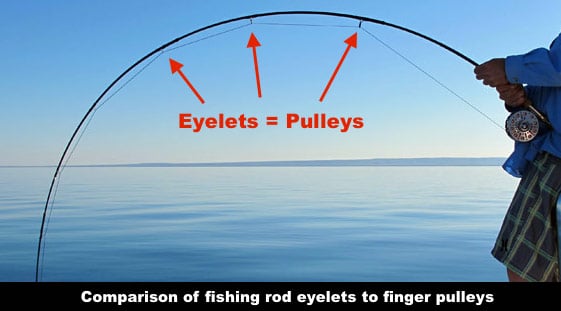
The A2 and A4 are the major pulleys of the system (inserting directly to the bone) and are most prone to injury. The A1, A3, and A5 pulleys are more flexible and attach to the volar plate, a ligament that connects two phalanges together. The most common injury in climbers is the A2 pulley sprain or rupture and is caused by overloading the tissue. If multiple pulleys rupture, this may present with what is known as “bowstringing.”5 To understand what bowstringing is, envision a bow (as in bow and arrow). The string goes from one tip of the bow to the other, unlike the fishing rod that has eyelets to keep the line close to the rod. A climbing specific example that helps to visualize bowstringing of the pulley tendons is climbing an overhanging wall and clipping only the first draw and the last draw before the lip. The rope not staying flush with the wall represents a bowstringing tendon. (See the images above and below to wrap your head around the concept). (Note: an obvious bowstringing is possible only after a rupture of the A2, A3 and A4 pulleys combined.)
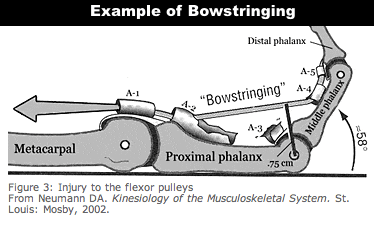
Biomechanics of Pulley Injuries
Our soft tissues only have so much strength and tolerable load, and past this point we may rupture ligaments, pulleys, tendons, etc. Following this logic, the A2 pulley can only tolerate a set amount of force until it fails, leading to strain or rupture. It is important to note that the A2 pulley holds both the FDS and FDP tendon, which is partly why it experiences greater forces than the A4 pulley. The amount of force placed on the A2 pulley depends on two main factors:
- The amount of external load placed on the fingertip (more simply, how much weight is hanging on that finger – full body weight, partial body weight, pulling dynamically off a hold, etc.)
- The angle of the PIP joint (think of a crimp position and how much that PIP flexes).
